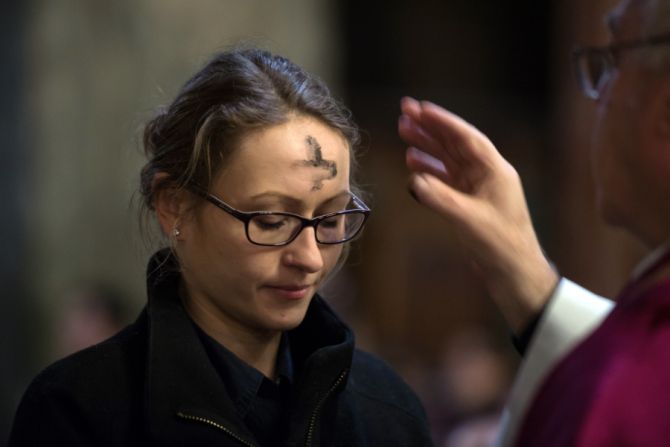
By Walter Sanchez Silva
At the Mass that marks the beginning of the season of Lent, which serves as preparation for Easter, the priest and the ministers who assist him say one of two possible formulas as they place ashes on the foreheads of the faithful present, even non-Catholics who want to receive them.
The Roman Missal states that “the minister then places the ashes on those who come forward, saying: ‘Repent and believe in the Gospel’ (cf. Mk 1:15) or ‘Remember that you are dust, and to dust you shall return’ (cf. Gn 3:19).”
What do you do after receiving the ashes?
There is no specified response or action for the penitent after receiving the ashes, so it is a moment to silently meditate on what the priest or minister said.
Father Mauro Carlorosi, an Argentine priest of the Oratory of St. Philip Neri and expert on the subject of divine mercy, told ACI Prensa, CNA’s Spanish-language news partner, that although “there is no minimum time” established to wear the ashes on the forehead or head, these can serve as a means to bear witness.
The ashes and witnessing to the Christian faith
The priest, who is also a member of Faustinum, an international association that promotes the Divine Mercy devotion, explained that the ashes “do a lot to serve as a witness that you are a Christian and are living Lent.”
“You don’t have to be afraid to bear witness wherever you are,” he emphasized.
“But, of course, the ashes on the head that day don’t prevent the performance of your duty. If you have to wash them off you can do so; you shouldn’t take them off because you’re too cowardly to wear an external sign,” the priest explained.
For Carlorosi, “in these times we need to know how to externalize our faith, particularly as laypeople. Just as we wear a wedding ring on the hand or make the sign of the cross [passing] before a church, we can wear ashes to courageously bear witness to Christ.”
“If the ashes fall off on their own or if you wash yourself, then this should be from losing that sign in the natural course of things,” the priest recommended.
“And if an ugly stain remains on your forehead that deteriorates as the day progresses, there is no problem in removing it so that it doesn’t look like dirt. There would be no problem then with washing,” he concluded.








、尤金·玛格拉桑神父(Fr-Eugene-Maglasang)(前排右八)及叶祥胜神父(前排右十)于2025年1月25日在圣体堂合影。(摄影:蔡彼得).jpg)

































